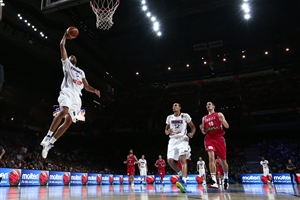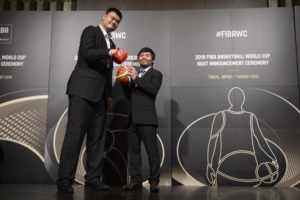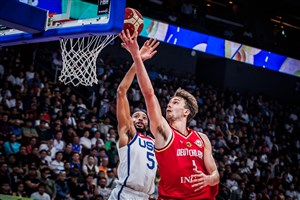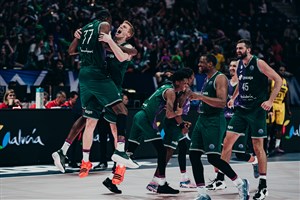
Spanish eyes could smile in 2016 for U17 World’s festival
NEWCASTLE (Paul Nilsen’s Women’s Basketball Worldwide) – The 2016 FIBA U17 World Championships for Men and Women is quite a mouthful, but that suits me just fine as we prepare to feast on a historical youth basketball event next year.
The decision to combine the previously separate events is an intriguing and exciting one.
You have to have every confidence in a highly respected organisation such as the Spanish Basketball Federation to get it right and I am delighted that it will take place in a country that is steeped in women’s basketball tradition.
I was also thrilled that upon announcing the change to the model for 2016, FIBA made six explicit points to re-enforce the rationale.
Now I hope they will go one step further and put some robust evaluation tools in place to see how successful the dual event will be in delivering against these objectives – as difficult as that is. Not least because while important for the sport generally, I feel it is ultra-important for a much troubled women’s game at the global youth level.
Bringing added value to the youth championships
The first mission depends on the specifics of how added value is defined, but in relation to the women, I think it is cross-cutting in so many areas, because as painful as it is, there seems to be little value in hosting a standalone women’s youth tournament.
Generating a bigger impact and visibility of women's competitions
Realistically, the women’s tournament will always be in the shadow of the men, but if you put that fact to the side and appreciate it will not change, the real question is whether more people take notice and actually watch some women’s ball. It has to get more people involved in the event generally and much like the many senior tournaments around which sees men and women playing at the same time, I think the men’s competition can be used as a lever to draw in additional women’s observers.
Whether the quality will be enough to keep them in the medium to long term is unknown, but going back to those fundamentals I talk about so irritatingly often, the women can offer real excitement with their shooting and energy if they get it right. Of course it will be interesting to see how much coverage the women’s tournament gets in terms of non-official media sources.
Reducing the cost of operations by joining two championships in a single venue and increasing the quality of the services
I am a pragmatist and it makes sense to reduce the overheads. Most pertinently, it resolves a longstanding issue for FIBA of nobody actually wanting to commit resources to facilitate a women’s tournament (or at least not enough applicants to generate value). It is also important that at least some of the savings are ploughed into giving it that aforementioned ‘festival feel’.
Having a stronger sporting appeal with the best men's and women's national teams featuring in a single championship
I concede that I don’t watch too much men’s basketball these days, mainly due to time constraints. So, I have to confess that as a general basketball fan, this isn’t only about supporters of the men’s game hopefully checking out the women’s as it cuts both ways. Having the choice to watch both competitions does make it very appealing.
Providing more content and experiences for the players (education, competition, fun and equality)
As any athlete will tell you, there is so much ‘downtime’ at tournaments. So, if money saved by the host nation can be put into more activities outside of practices and games, this will be most healthy for the participants.
Creating ties among all participants and building a diverse and committed community working for the future of basketball
It would be nice to think that if a few future heavyweight men’s stars have watched and befriended their female peers at 16 or 17-years-old and then during a prospective NBA, EuroLeague and of course international career, they could help champion the cause of the women’s game through those relationships built as teenagers.
The next logical step would be to ensure a dual hosting at U19 level in 2017 – but it might be prudent to ensure all lessons are learned from Spain first.
Finally, I don’t want to burst the bubble as it is only just being created, but this model will not resolve two of the biggest issues for the women’s game and that is the cluttered calendar of women’s youth events with specific regards to Europe.
And, European nations placing more focus on their own continental championship because of pressures to compete in Division A and not drop into the second tier.
I can’t blame them either as it is a cut-throat business both on and off the floor.
Go with a weak team and you will be punished, with even the biggest Federations like Turkey having suffered relegation last year.
Additionally, many other Federations are judged by their governments on this competition annually in terms of targets for funding income.
Paul Nilsen
FIBA
FIBA's columnists write on a wide range of topics relating to basketball that are of interest to them. The opinions they express are their own and in no way reflect those of FIBA.
FIBA takes no responsibility and gives no guarantees, warranties or representations, implied or otherwise, for the content or accuracy of the content and opinion expressed in the above article.

















